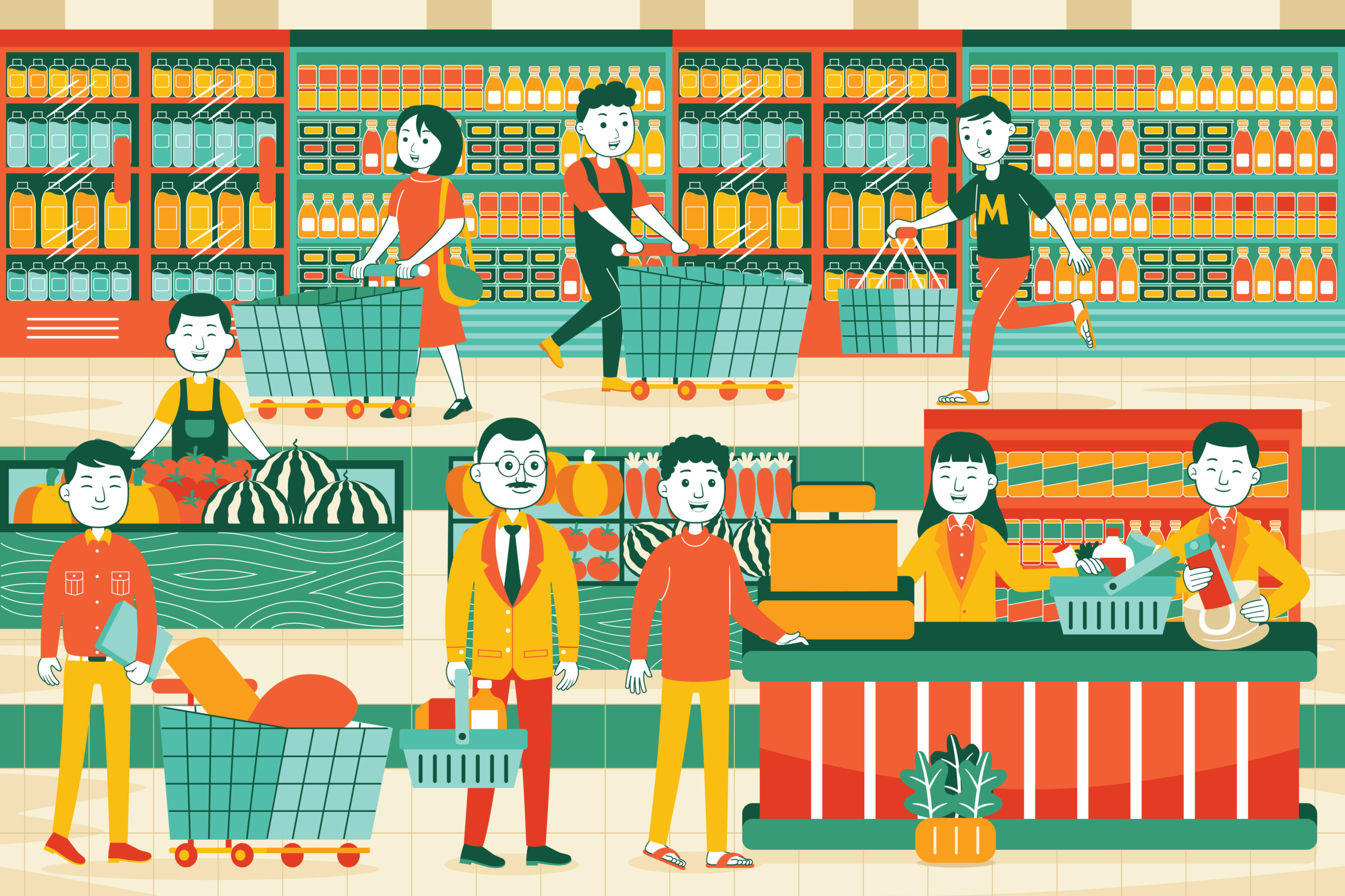Independent grocers are generally willing to embrace the digital era. Still, they might not always consider the after-transaction customer pathway. We can all agree that the way people buy groceries is modernizing. Newly established grocery shopping habits will stick around for a long time. As a result, brands and retailers must constantly adapt to meet (and surpass) evolving consumer expectations. One of the best times to engage with customers is the “follow-through” after the transaction occurs. Grocers often overlook this critical opportunity.
When it came to buying food and other home necessities in the past, consumers had few choices except to go to the grocery store in person. But now, following the pandemic, grocery customers report that they are comfortable with online shopping and delivery coordination. One can no longer count on them participating in-store in a loyalty program. The period after the sale is the most suitable time to stay in touch with all your shoppers to keep them engaged with your brand.
The Post-Purchase Ecosystem
Because of the changing dynamics of grocery shopping, grocers must frequently evaluate and adopt different approaches to ensure consumers thrive in their marketing ecosystem. One of the ways to keep the conversation alive and generate loyalty is to build your ecosystem to attract more consumers by offering a wide range of products and services – both on and offline.
Offering meal kits, online ordering, and pick-up options are valuable digital services that bridge the divide between in-person and online. These will assist you in developing a customer-centric value proposition throughout your ecosystem and provide customers with a seamless experience that encourages loyalty. A new digital experience is generally less expensive to deploy than in-person and in-print collateral.
According to data, building an always-on digital ecosystem can bring meaningful improvements and is more precise, offering more achievement on a reasonable budget.
Evaluation
Once shoppers tap the shopping app, go to the webpage to pay for their cart, or depart the payment counter, the post-purchase review procedure begins. This spot is where diving deeper into consumer buying behavior is essential. Making them offers and providing enticements back to the store and then measuring the effectiveness of those tactics will refine the customer’s experience over time. Doing nothing after a positive experience always leaves the possibility that they might go elsewhere the next time they need groceries.
Rebuilding Strategies
Existing customers are the easiest to communicate with, yet many retailers overlook them in pursuit of gaining new ones. We all know that persuading existing customers to make a repeat purchase is more cost-effective than acquiring a new customer. By measuring the effectiveness of your marketing programs, you can focus on the most effective strategies.
Below are a few tactical ideas for making sure your marketing encourages customers to come back to purchase from you. Remember that you’re informing customers about the store’s continuous discounts and offers to draw attention to their buying behavior. Tailor your offerings to suit their unique needs. How do you go about accomplishing this most effectively?
Social Media Engagement
Social media is a crucial factor in enhancing customer loyalty. This strategy is powerful for retailers that target a particular customer base since social media can tell you a lot about its users. You may also prepare customers for transactions by reinforcing the store’s value proposition and encouraging them to return. Once you engage them on social media, they should have the same positive experience after they make a purchase.
Canvass Feedback
To gain statistical data, grocers can engage customers via surveys. Naturally, you can leverage this data to improve customer experience and operations. Again, this information is critical to building a profitable ecosystem because it spots problems before they become damaging.
Rewarding Shoppers
Promoting rewards programs encourage new consumers and increases the likelihood that shoppers will return and spend more money on average. Thus, that’s the best time to use email marketing to entice them back in with exceptional deals if they haven’t been in the store for a while.
Customer Experience is Everything
Whether done online or offline, a good shopping experience must have the three Cs – Cost, Convenience, and Consistency. When consumers feel valued, you will reap measurable results. Critical to this effort is having the best technology on hand to take advantage of changing buying behaviors and stay at the forefront of innovation. Additionally, remember that purposeful and personal engagements are as valuable as discounts when you’re trying to foster lasting brand loyalty. Considering the industry’s movement toward consumer-driven action online, grocery retailers must adapt to these shifts and invest more in offering a deep pre-and post-purchase experience that includes smartphones and your store website.

